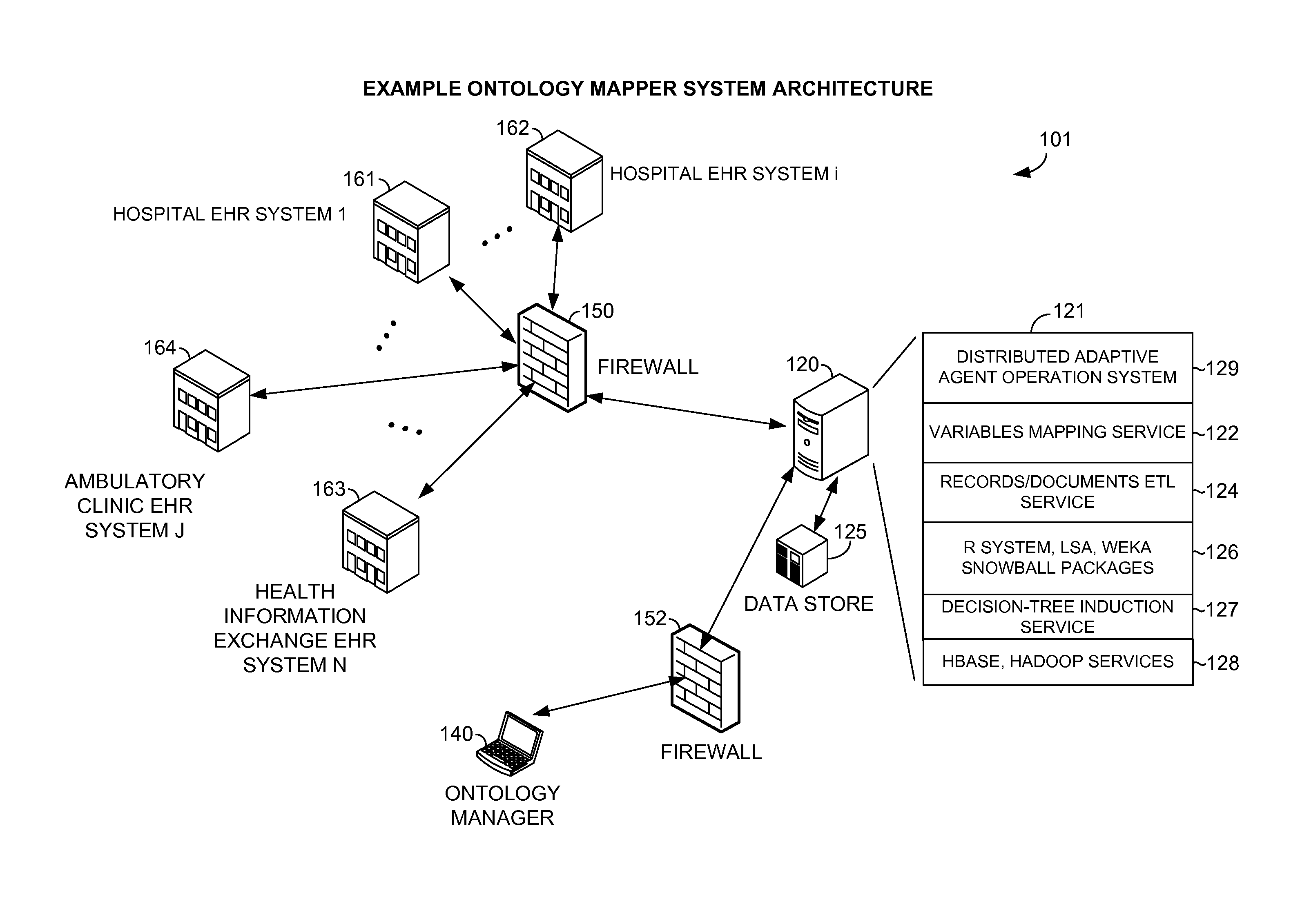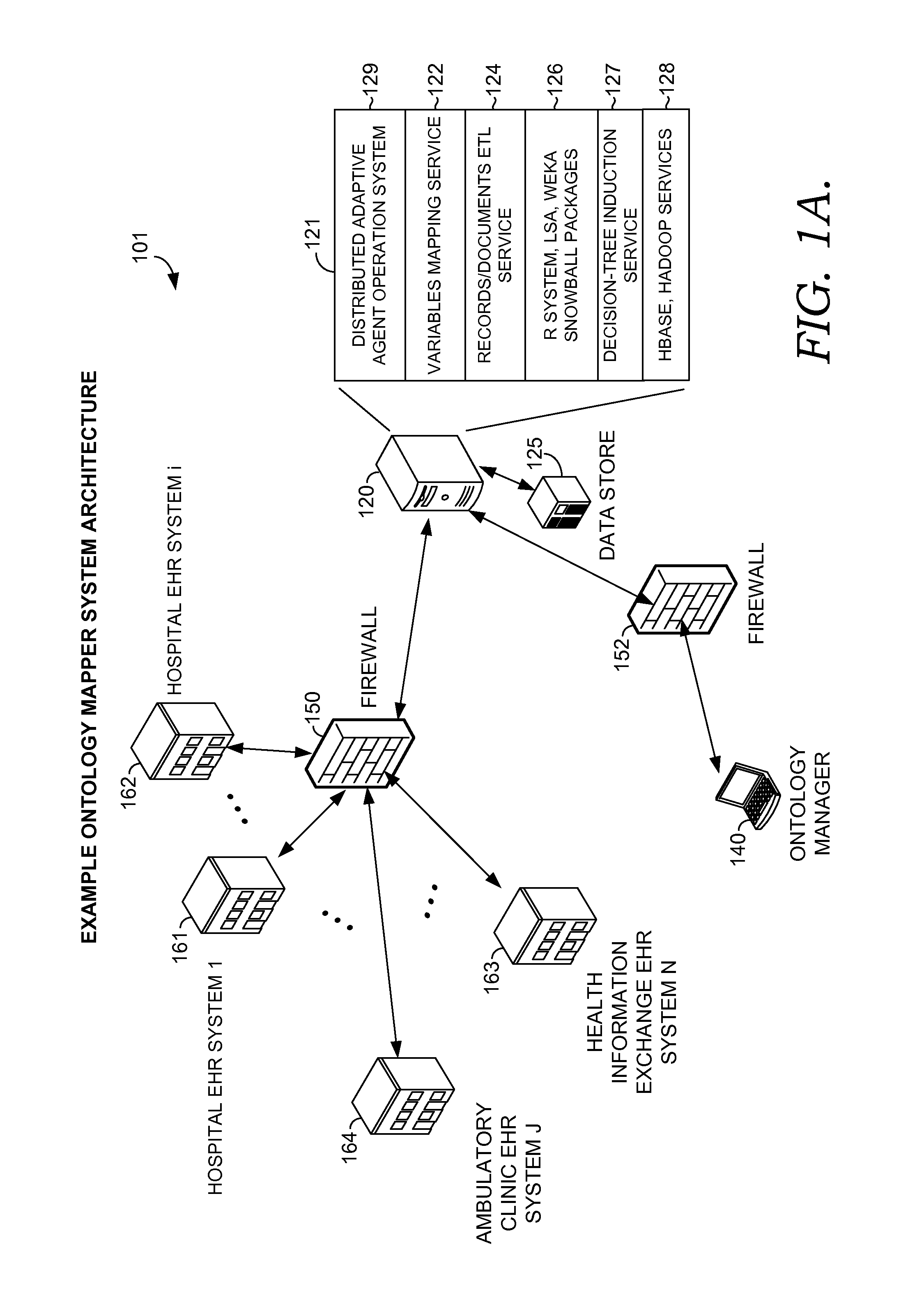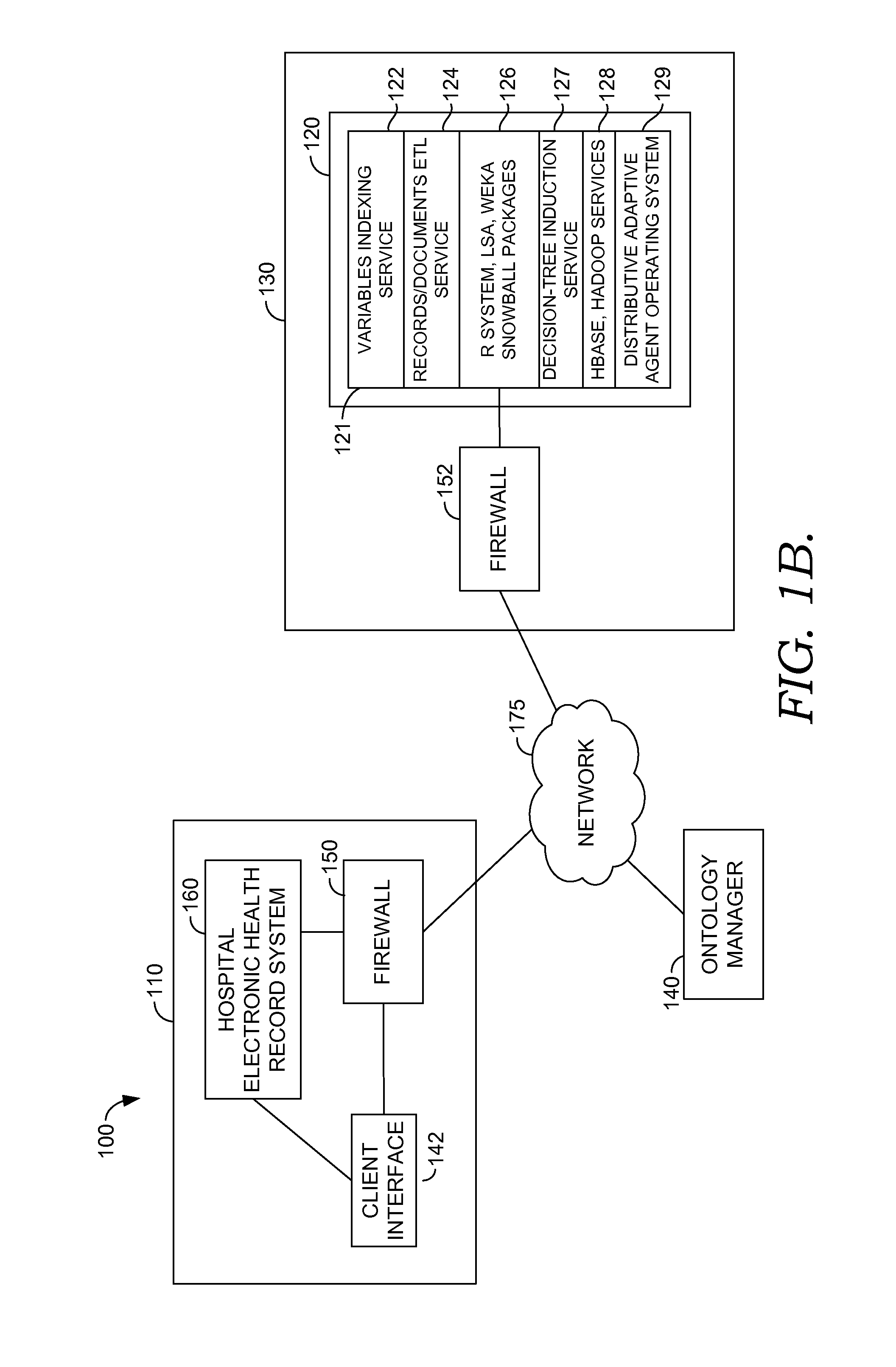Ontology mapper
a technology of ontology and mapper, applied in the field of ontology mapper, can solve the problems of logistically and financially impossible for health authorities to design, fund and conduct all prospective research, and not describe a centralized database of patient information
- Summary
- Abstract
- Description
- Claims
- Application Information
AI Technical Summary
Benefits of technology
Problems solved by technology
Method used
Image
Examples
example 1
[0106]Embodiments of method 200, which include text pre-processing and LSA methods and subsystems, have been reduced to practice using a server cluster running the Linux operating system, Java Virtual Machine and Eclipse stack, Java Agent Development stack (JADE), Quinlan's C5 (or J48 Weka) decision-tree induction software, the open-source statistical software package R, and the R modules LSA, RWeka, and Snowball. Parsing of unstructured text was performed using Discern nCode® to transform the matched variable descriptors into SNOMED-CT codes. In these embodiments, retrieval of structured discrete items was performed using Discern Explorer™ operating on Cerner Millennium™ systems, some of which had been mapped using Cerner's Controlled Medical Terminology (CMT™) universal concept identifier ontology and some of which had not been mapped.
[0107]In this example, fifty-one subjects cared for by two hospitals with a diagnosis of sepsis and 149 control subject in-patients with no known ri...
PUM
 Login to View More
Login to View More Abstract
Description
Claims
Application Information
 Login to View More
Login to View More - R&D
- Intellectual Property
- Life Sciences
- Materials
- Tech Scout
- Unparalleled Data Quality
- Higher Quality Content
- 60% Fewer Hallucinations
Browse by: Latest US Patents, China's latest patents, Technical Efficacy Thesaurus, Application Domain, Technology Topic, Popular Technical Reports.
© 2025 PatSnap. All rights reserved.Legal|Privacy policy|Modern Slavery Act Transparency Statement|Sitemap|About US| Contact US: help@patsnap.com



